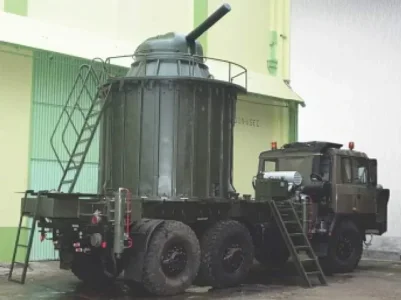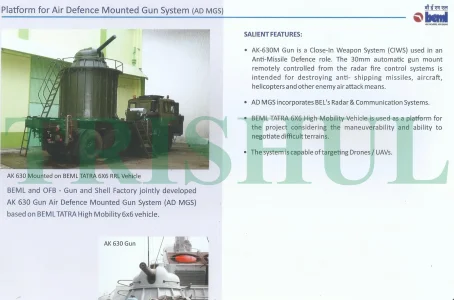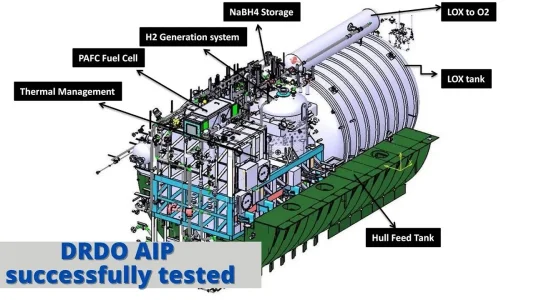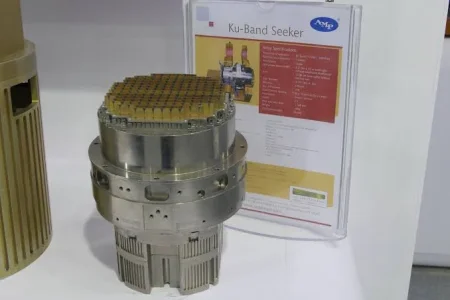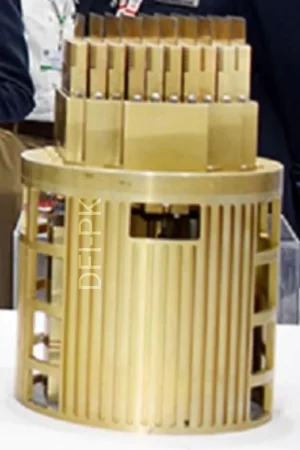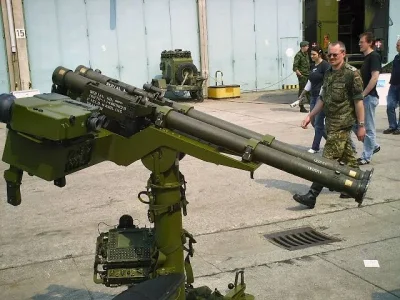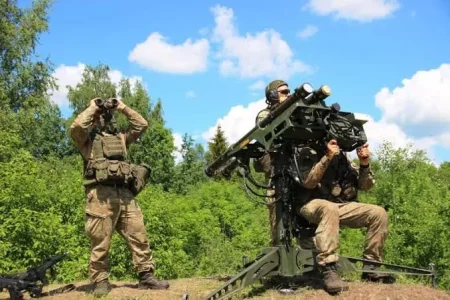- Joined
- Jun 30, 2024
- Messages
- 1,239
- Likes
- 2,847
[would be looking for good stuff from drdo thread on dfi]
project-samyukta-detailed

Project Samyukta, a joint software/integration-intensive R & D programme of the DRDO, the TATA Group and the Indian Army’s Corps of Signals, reached fruition last April and was recently showcased by Bharat Electronics Ltd during Aero India 2009. The project, launched in May 1994, had called for the development and deployment of an integrated EW system covering the 1.5MHz–40GHz bandwidth. The system comprises both communications (com) and non-communications (non-com) segments and encompasses 145 wheeled vehicles for housing sensors for electronic surveillance, interception, monitoring, analysis and jamming of all communications and radar signals. The core system was successfully demonstrated to the Indian Army by late 2002 by the DRDO’s Defence Electronics Research Laboratory. The Army subsequently placed an order with state-owned Bharat Electronics Ltd for the production of three communications control centre (CC) blocks at a total cost of Rs4.25 billion. Two CC blocks with 46 vehicles were delivered in January 2004 to the Army after successful demonstration and user trials in early 2003. Demonstrations of the non-com core system, comprising a CC, electronic support measures sub-suite, and electronic countermeasures-low and high-frequency entities were successfully conducted in 2005, following which Army HQ ordered the first two non-com CC blocks at a cost of Rs5 billion. Work is now underway on a sub-project of Samyukta, called ‘Samrat’, under which the design and development of indigenous communications EW receivers for search, monitoring, direction-finding (single and multi-channel), analysis and decoding in the HF/VHF and UHF frequency ranges along with associated systems control/applications software development is now being undertaken. Thus far, technologies have been developed for compact low-noise, high-dynamic range HF (0.5-30MHz) and V/UHF (20-3,000MHz) search-cum-monitoring receivers for COMINT suites, as well as for new-generation narrow- band signals classifier, and the demodulator and decoder sub-system.
The com segment’s COMINT/ELINT sensors include those for detecting emissions from pulsed airborne synthetic aperture radars (SAR), from the active radars of air-to-surface precision guided-munitions and from radar altimeters, from airborne early warning & control radars, and from terrain-following radars while they are still 150km away. The three types of active jammers employed include those for wide-band jamming of hostile field artillery radio proximity fuzes over an area of 600,000 square metres, and for simultaneous jamming up to eight hostile X-band airborne radars in azimuth and elevation. SAR radars operating up to 80km away can be jammed, while the X-band monopulse pulse-Doppler airborne radars of combat aircraft can be jammed out to a distance of 50km. The efficient emitting power of the jammer is not less than 580kW. The jammers can be deployed in two patterns: 16 as a battalion, and 6 as a company.
Frequency detection sensitivity is 110-123dB/W, while the frequency measurement accuracy is 1MHz. Bearing accuracy is automatically achieved between 1-3 degrees. The measurement accuracy of temporal pulse parameters 0.05 milli-second at a pulsed length of 0-2-70 milli-seconds. The measurement accuracy of the pulsed repetition period is 0.05 milli-second for a minimal pulse duration of 1 milli-second. Measurement accuracy of the pulse string-repetition period is 0.1 second. The system’s internal database contains frequency libraries of up to 2,000 types of radars. Another type of jammer operates in the 13,333-17,554MHz frequency bandwidthand can process incoming signals like simple-pulse, quasi-continuous wave (CW) and CW, pulsed chirp-modulated, and phase code-shift keyed with pseudo-random frequency-tuning signals. The input sensitivity of a receiver fitted with frequency determination and reproduction sensors is minus 90, while the radiated power is 600 Watt. The frequency-accurate interference signals reproduction is +/-0.5MHz. Spectrum-matching of the reproduced interference signal is fully automated. Jamming signals emitted include MP-1, MP-2, MP-1 + noise, MP-2 + noise, quasi-CW noise, spot jamming in frequency and range deception signals. The system can also jam GPS signals out to a distance of 70km, and multi-frequency autodyne radio proximity fuzes.
The non-com component’s COMINT/ELINT suites can operate autonomously and are also available in man-portable versions with GIS and digital moving map overlays. They can undertake panoramic frequency-band surveillance and produce time-and-frequency analysis in three formats: gain-frequency panorama, time-and-frequency panorama, and frequency-intensity panorama. Frequencies are monitored in the 30-18,000MHz bandwidth, and the direction-finding error is not more than 3 degrees. The suites are thus optimised for providing search, intercept, analysis and monitoring capabilities of hostile communications emissions.--Prasun K. Sengupta
[originally posted by Shridhar]
project-samyukta-detailed
Project Samyukta, a joint software/integration-intensive R & D programme of the DRDO, the TATA Group and the Indian Army’s Corps of Signals, reached fruition last April and was recently showcased by Bharat Electronics Ltd during Aero India 2009. The project, launched in May 1994, had called for the development and deployment of an integrated EW system covering the 1.5MHz–40GHz bandwidth. The system comprises both communications (com) and non-communications (non-com) segments and encompasses 145 wheeled vehicles for housing sensors for electronic surveillance, interception, monitoring, analysis and jamming of all communications and radar signals. The core system was successfully demonstrated to the Indian Army by late 2002 by the DRDO’s Defence Electronics Research Laboratory. The Army subsequently placed an order with state-owned Bharat Electronics Ltd for the production of three communications control centre (CC) blocks at a total cost of Rs4.25 billion. Two CC blocks with 46 vehicles were delivered in January 2004 to the Army after successful demonstration and user trials in early 2003. Demonstrations of the non-com core system, comprising a CC, electronic support measures sub-suite, and electronic countermeasures-low and high-frequency entities were successfully conducted in 2005, following which Army HQ ordered the first two non-com CC blocks at a cost of Rs5 billion. Work is now underway on a sub-project of Samyukta, called ‘Samrat’, under which the design and development of indigenous communications EW receivers for search, monitoring, direction-finding (single and multi-channel), analysis and decoding in the HF/VHF and UHF frequency ranges along with associated systems control/applications software development is now being undertaken. Thus far, technologies have been developed for compact low-noise, high-dynamic range HF (0.5-30MHz) and V/UHF (20-3,000MHz) search-cum-monitoring receivers for COMINT suites, as well as for new-generation narrow- band signals classifier, and the demodulator and decoder sub-system.
The com segment’s COMINT/ELINT sensors include those for detecting emissions from pulsed airborne synthetic aperture radars (SAR), from the active radars of air-to-surface precision guided-munitions and from radar altimeters, from airborne early warning & control radars, and from terrain-following radars while they are still 150km away. The three types of active jammers employed include those for wide-band jamming of hostile field artillery radio proximity fuzes over an area of 600,000 square metres, and for simultaneous jamming up to eight hostile X-band airborne radars in azimuth and elevation. SAR radars operating up to 80km away can be jammed, while the X-band monopulse pulse-Doppler airborne radars of combat aircraft can be jammed out to a distance of 50km. The efficient emitting power of the jammer is not less than 580kW. The jammers can be deployed in two patterns: 16 as a battalion, and 6 as a company.
Frequency detection sensitivity is 110-123dB/W, while the frequency measurement accuracy is 1MHz. Bearing accuracy is automatically achieved between 1-3 degrees. The measurement accuracy of temporal pulse parameters 0.05 milli-second at a pulsed length of 0-2-70 milli-seconds. The measurement accuracy of the pulsed repetition period is 0.05 milli-second for a minimal pulse duration of 1 milli-second. Measurement accuracy of the pulse string-repetition period is 0.1 second. The system’s internal database contains frequency libraries of up to 2,000 types of radars. Another type of jammer operates in the 13,333-17,554MHz frequency bandwidthand can process incoming signals like simple-pulse, quasi-continuous wave (CW) and CW, pulsed chirp-modulated, and phase code-shift keyed with pseudo-random frequency-tuning signals. The input sensitivity of a receiver fitted with frequency determination and reproduction sensors is minus 90, while the radiated power is 600 Watt. The frequency-accurate interference signals reproduction is +/-0.5MHz. Spectrum-matching of the reproduced interference signal is fully automated. Jamming signals emitted include MP-1, MP-2, MP-1 + noise, MP-2 + noise, quasi-CW noise, spot jamming in frequency and range deception signals. The system can also jam GPS signals out to a distance of 70km, and multi-frequency autodyne radio proximity fuzes.
The non-com component’s COMINT/ELINT suites can operate autonomously and are also available in man-portable versions with GIS and digital moving map overlays. They can undertake panoramic frequency-band surveillance and produce time-and-frequency analysis in three formats: gain-frequency panorama, time-and-frequency panorama, and frequency-intensity panorama. Frequencies are monitored in the 30-18,000MHz bandwidth, and the direction-finding error is not more than 3 degrees. The suites are thus optimised for providing search, intercept, analysis and monitoring capabilities of hostile communications emissions.--Prasun K. Sengupta
[originally posted by Shridhar]




